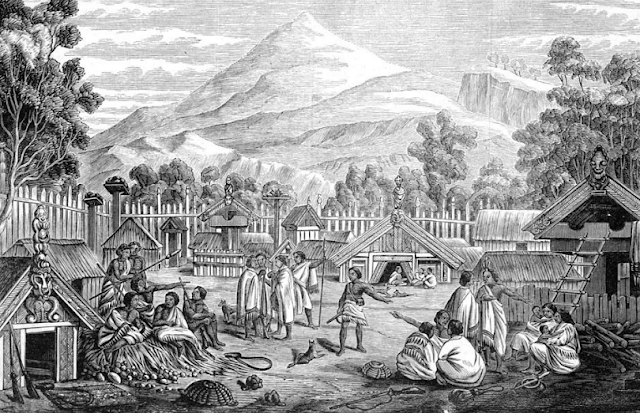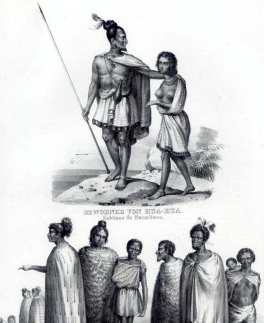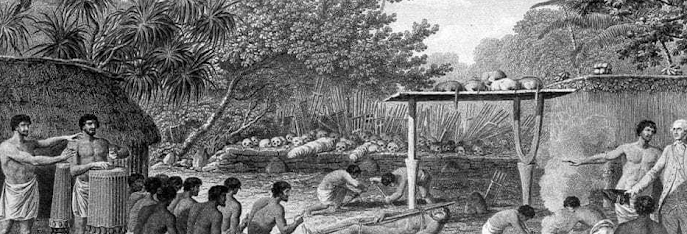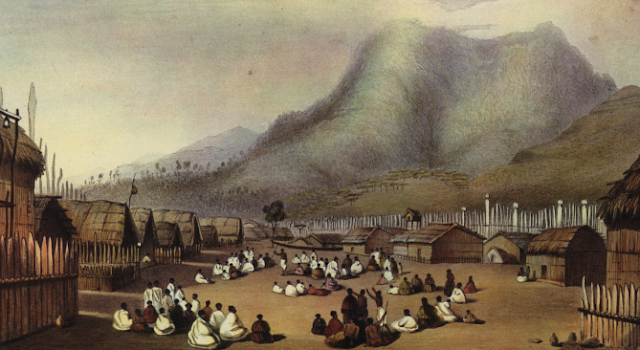Hey Guys!
We hope you all doing good today. We are going to discuss in detail about famous Maori people and their culture. Everyone should like to know the famous Maori people, their culture, their wars etc..,
Famous Maori People culture
The famous Maori people have been renowned for their cultural connections with war; today, Māori soldiers have fought in recent conflicts like the Vietnam War and the war in Afghanistan. The famous Maori people are one of the newest indigenous people in the world, but their history extends back thousands of years.
The Europeans who first landed on their island misinterpreted most of their history and culture, depicting them as inferior people. Many people have now rejected the colonizing depictions of the Māori, but it has left a blank spot in history as these people struggle to figure out who they are and their proper place in New Zealand’s culture.
Although the Māori people are still determining who they are, they have made significant strides to establish themselves as independent and worthy contributors to the world.
Who are famous maori people?
The famous Maori people are the indigenous people of New Zealand, but the islands are so remote that historians believe that people did not begin colonizing them until at least 950 CE. However, there is no archeological evidence of human inhabitation until the 1200s – the island is about 2,600 miles away from Australia, and the sea is notoriously challenging to sail safely. The first people to set foot in New Zealand were the Polynesians, who were expert sailors.
They had landed on most of the islands in the South Pacific and might have even traveled all the way across the Pacific to South America before they settled New Zealand. The story of how the Māori people settled in New Zealand is filled with uncertainty. Historians believe that Polynesians traveled to the islands long before they colonized them; however, visits don’t leave conclusive archeological evidence, so historians are not sure how long the Polynesians were visiting before settling in New Zealand.
The most conclusive evidence they have was left by particular Polynesian rats that were on the islands long before the thirteenth century, but the evidence is far from conclusive at this point in modern Māori studies. Legends say that the first people to settle there were Toi and Whatonga, a chief and son-in-law who got separated at sea and eventually found each other in the archipelagos.
Later, the Great Fleet arrived after fleeing the internal struggles of modern French Polynesia and established its control over modern New Zealand. These legends sound nice, especially to Western ears; most historians agree that there are grains of truth behind these stories.
Toi and Whatonga were probably actual people, and the Māori people probably did settle in waves as Polynesians braved the treacherous sea around the archipelago. The archipelago was different from the islands the Polynesians were used to; although they kept some of the critical characteristics of the other Polynesian groups, like general artistic styles, they also began developing their own culture due to their long periods of isolation.
The famous Maori people placed a greater emphasis on family and appeared to have eaten a higher protein diet early on – there is evidence that they farmed, but it was not their primary food source. When the large flightless birds became extinct, the Māori people transitioned to farming-based communities.
Food scarcity meant tribes began fighting amongst each other and building little fortified hills called pā as the tribes began developing more complex social structures markedly different from the other Polynesian cultures. By the time the Māori had entered their classical period, the tribe had become an essential part of their society; everyone was part of an ancestral tribe, some of which could be traced to the family canoe that had first landed in New Zealand. Māori culture highly valued mana – its best translation into English is sacral authority, and anything that diminishes a person’s mana is highly offensive.
A person could raise or lower their personal and family mana with actions, but anything that negatively impacted someone else’s mana could incite tribal warfare, which was known for being violent and ruthless for all members of the tribe.
However, the Māori people did not live in a permanent state of warfare; their wars tended to only be in the summer, and combat was usually hand-to-hand, limiting casualties. Some tribes also did their best to avoid war by building solid defenses where needed. They also had times of peace and traded with each other. They shared mythology and a language, showing that there was a lot more uniting them than had been thought in the past.
How did the Europeans describe the famous Maori people?
The Māori did not write anything down, so much of what we first know about them comes from the Europeans who first landed in New Zealand – they were determined to colonize it, so many of the first and longest-enduring stories of the Māori people are exaggerated or simply incorrect. The Māori people had been isolated for centuries before the first Europeans arrived in either late 1642 or early 1643; the people had even lost contact with the other Polynesian islands.
Dutch explorers under the Dutch East India Company discovered the island and sailed close enough that the Māori people in the region spotted them. They came out on canoes, yelling and trumpeting; the Europeans mistook this as a friendly welcome and answered in kind. They accidentally started a fight – when the Europeans got into lifeboats to meet the new people, the Māori attacked and killed four people before they figured out that yelling and blowing trumpets is not a typical friendly greeting for these indigenous people. There were a few rounds of attacks, and at least one Māori was shot.
Relations with the Europeans did not begin well, but it was about 126 years before the next contact came – life continued for the Māori people, who saw the first contact as so unimportant that they did not turn it into a legend. James Cook’s arrival in 1769 had a much more significant impact on the people. He was an explorer – more interested in stars and different cultures than in conquest. He took the time to learn the Māori culture and tried to share it with the world; his work opened up the archipelago to the world and introduced the indigenous people to the wider world around them.
Although Cook worked hard to showcase these people as brave, benevolent, and noble, other Europeans strongly disagreed; Europeans who visited might find themselves violently attacked by the same tribes who were welcoming them to the island a few days earlier. They had usually violated part of the Māori culture like mana, and the indigenous people had to attack as the next step in their society.
However, the Europeans did not understand the complexities of the native culture and so labeled them treacherous, inconsistent, and difficult to control due to their organization and vigor. While these may seem like negative characteristics, it saved the Māori people from colonization in the 1700s, allowing them time to adapt to European ideas and technology. Despite their characterization as unnecessarily violent, the Māori still had to deal with colonization in the 1800s; the warfare between the various tribes intensified as they obtained firearms, making their battles more violent than ever. This collection of battles is called the Musket Wars, and it was instrumental in bringing about British colonization; the wars were a significant part of a decrease in population, which left the indigenous people vulnerable.
The British first tried to take the land peacefully, convincing the local chiefs to sign away their right of governance to Britain through a treaty; on May 21, 1840, the British Empire officially colonized New Zealand, but this colonization was in name only. People began pouring into New Zealand, encroaching on Māori lands, and accidentally bringing traditional European diseases. These new colonists were not interested in learning the indigenous culture or incorporating the two cultures into a melting pot like the people who had come before them; instead, they wanted land and were willing to resort to tricks and deceit to get it. The Māori resisted this, and violent altercations ensued across the archipelago.
The scrimmages over land were light compared with other wars; the Māori were intelligent people, and they knew the British were not holding up their end of the treaty signed in 1840 and felt they should be held accountable. While they were able to exert their influence and hold off the British army time and again, the Māori numbers dwindled as the colonists’ numbers grew; eventually, there weren’t enough people to effectively resist the British Empire, who saw them as second-class people to be subdued by any means.
Yet, despite the British army’s superior numbers and terror tactics, they never managed to defeat the Māori completely; they continued to fight for their culture and tribes, whether that fighting happened on the battlefield or in the political arena. As they learned how to fight without weapons, they finally began to use the colonization machine to help their tribes find some protection and representation under the British imposed law.
What are the famous Maori people up to today?
The famous Maori people had had four seats in the New Zealand assembly since 1867, but at first, this meant very little to the people because they did not know how to use them. The government continued to see the disappearance of the native culture as natural progression and continued to discriminate against them; however, the Māori were stronger than the British Empire, and as more educated people came into power, they began to fight for the rights of their people.
In the 1960s and 1970s, they had gone through a Māori renaissance; their leaders began advocating in earnest for rights and equality, including equal opportunity in higher education and better-paying jobs. Achieving equality and ending prejudice was not easy – there are still remnants of it today – but by the 1980s, they began to have some economic, cultural, and social equality as their culture became part of the mainstream culture in New Zealand.
Because the Māori were not ever entirely subdued or eliminated, their culture is still alive today; it changes with them, keeping some of the past while also adapting to the present, just like any other living society. Their traditional religion has a complex supernatural universe filled with gods and other supernatural beings, and there are a variety of rituals and ceremonies used to either communicate with these beings or to manipulate the spiritual world – they are performed after a child’s birth or to dedicate a new canoe or building.
The most famous ritual is a ceremonial dance called haka. It is widely misunderstood – some people believe it is only a war dance. While they used it to frighten enemies and encourage fellow soldiers in the past, they also used the haka for various events; there were a variety of movements and chants, all of which were connected to individual tribes. The celebration of haka is controversial in New Zealand today; depending on who is performing it, some view it as cultural appropriation, while others view it as a celebration of the Māori culture.
Many Māori people do not practice their ancient religion today; instead, they are either not religious or follow some form of Māori Christianity, which blends Christian teachings with traditional Māori values. Their religious and cultural beliefs permeate their art; traditionally, this was limited to carvings and tattoo work, which was a respectable way of showing one’s mana. In the 1900s, though, the people began exploring painting as the European influence became more prominent in New Zealand.
Even though they have adapted their way of life to fit into Western culture today, the Māori people of New Zealand are still stubbornly holding on, fighting to take whatever life throws at them and make it uniquely their own. They are even an integral part of the New Zealand armed forces, allowing them to practice a semblance of the traditional Māori connection to warfare. They continue to branch out into the world, displaying their traditional values through new mediums and adapting to a world that would not be complete without them. We hope you guys enjoyed our work on famous maori people and their culture.







0 Comments
Chat with InfoWite!